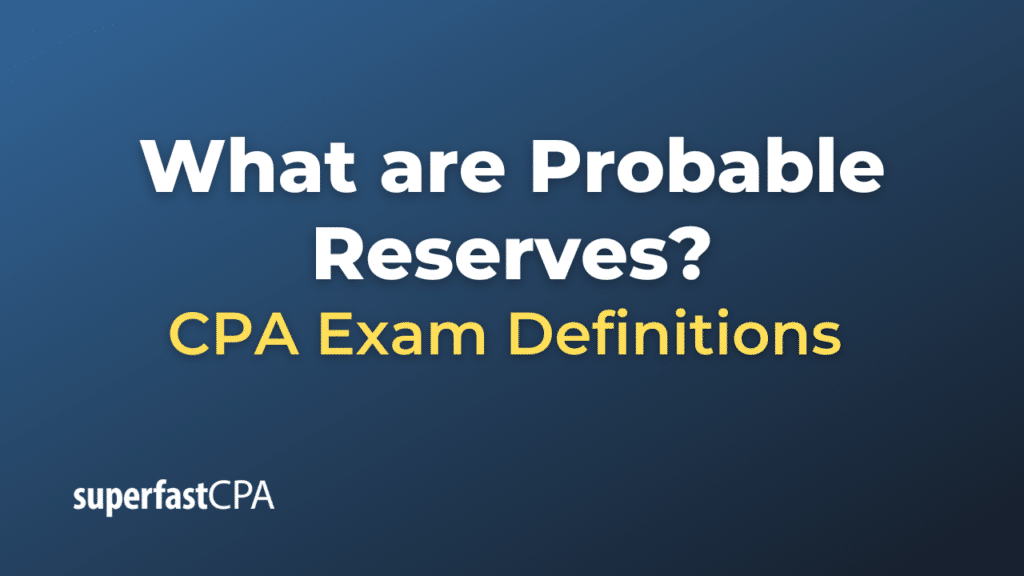Probable Reserves
In the oil and gas industry, reserves are defined as the estimated quantities of crude oil, natural gas, and other resources that are anticipated to be commercially recoverable from known reservoirs under existing economic and operating conditions. These reserves are typically classified into three categories: proved, probable, and possible reserves, each reflecting a different level of certainty about the recoverability of the resources.
“Probable reserves” are those reserves that are less certain to be recovered than proved reserves but more certain to be recovered than possible reserves. In other words, they have a reasonable level of certainty to be recoverable but aren’t as assured as the proved reserves.
The specific definition of probable reserves can vary slightly, but it’s generally understood to be reserves that have at least a 50% chance of being produced. The exact degree of certainty for classification as probable reserves can depend on the regulatory guidelines or reporting standards being used, such as those set by the Society of Petroleum Engineers (SPE) or the U.S. Securities and Exchange Commission (SEC).
It’s important to note that estimates of reserves, including probable reserves, are just that—estimates. The actual quantity of oil and gas that can be recovered can vary based on a range of factors, including changes in technology, market prices, operating costs, and further results from exploration and development activities.
Example of Probable Reserves
Let’s consider a hypothetical oil company, “OilMax Corp.”
OilMax Corp operates three oil fields: Field A, Field B, and Field C. The engineers and geologists at OilMax Corp, using sophisticated technologies and analyses, estimate the quantity of recoverable oil from these fields.
Field A is well-explored and has been producing oil consistently for years. They are highly confident in the estimate of recoverable oil and classify 100 million barrels as “Proved Reserves.”
Field B has been producing oil but not as long as Field A and thus carries a bit more uncertainty. They estimate that Field B can produce 50 million barrels, but because of the increased uncertainty, they classify these as “Probable Reserves.”
Field C is the newest and least explored. They believe it may produce 75 million barrels of oil, but the geological complexities and uncertainties lead them to classify these as “Possible Reserves.”
So, in this example, the 50 million barrels from Field B would be the “Probable Reserves” for OilMax Corp. They are reasonably confident in their ability to extract this oil, but the level of certainty is less than that of the Proved Reserves in Field A.













